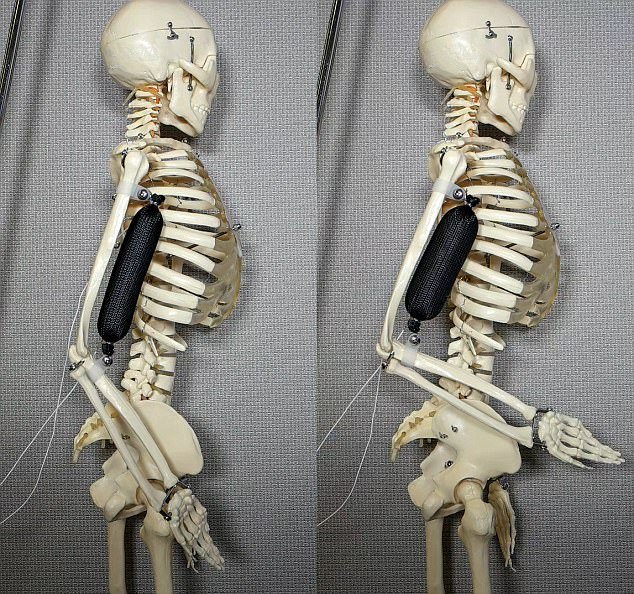
Science fiction is not just about movies made in Hollywood, because it is closer to us day by day. There are even exceptional cases. For example, the medical advances every day contribute more to the knowledge of the human being and especially in prosthetics for the disabled, they are getting faster and the results more complex.
In addition robotics has also had an impressive boom from a few years ago and now scientists are one step closer to creating realistic machines.
A select group of scientists and <a href="https://engineering.columbia.edu/news/hod-lipson-lifelike-robots"researchers from the Columbia University School of Engineering, better known as Columbia Engineering in the United States, has recently created a synthetic muscle that can lift several times its weight.
How is it possible?

The muscle developed by the university's engineers consists of a unique artificial fabric, which is printable in 3D with an intrinsic expansion capability that does not require an external compressor or high voltage equipment to operate, unlike the previous ones models that have been developed.
The material, developed by the scientists of the university can perform multiple functions such as: push, pull, bend and rotate; thanks to its silicone rubber compound and ethanol dispensing microbubbles). And it's not all, it's also capable of carrying 1,000 times its own weight. This development in robotics, could facilitate the development of super-strong machines.
Synthetic muscle technology has been a reality for some time back, and currently dependent on external compressors attached or high voltage equipment to be able to operate. But, robots equipped with this new fabric could be freed from all those things and as specialists have said, they could move like humans, allowing them to pick up and pick up better objects.
There are already plans to implement robots developed with this technology; specialists say they will be used to help with non-invasive surgeries and for the care of the elderly - among other tasks.
Developers of this material have said that this structure, can be considered as the first synthetic muscle that can withstand the stress of high performance and high voltage. "We've been making great strides toward making better robots, but robot bodies are still primitive," said project director Hod Lipson PHD. "This is a great piece of the puzzle and, like biology, the new material can be molded and restructured in a thousand ways. We have overcome one of the final barriers to making realistic robots."
3D printers are fundamental
The 3D printers form an essential part in the process of construction of this material. After printing 3D in the desired shape, the team electrically powered the artificial muscle using a wire for electrical connections; which was thin, and low power (8V). They then tested it on a variety of robotic applications, where it demonstrated significant expansion-contraction capability. The researchers also claim that the synthetic tissue with which the muscle is built is capable of expanding up to 900 percent when heated electrically to 80 ° C.
Scientists hope to further develop this project. Based on the results of their research, the team of engineers have planned to incorporate conductive materials to replace the need for the connecting cable. Another important element will be artificial intelligence. Even later, the researchers intend to combine it with the synthetic muscle and manage to control it, resulting in (expect) a "natural" movement.

Original post from Here https://engineering.columbia.edu/news/hod-lipson-lifelike-robots
Interesting.
Would be nice to have any link/source here for further reading ...
Hi @jeki01 sure, here you can read https://engineering.columbia.edu/news/hod-lipson-lifelike-robots